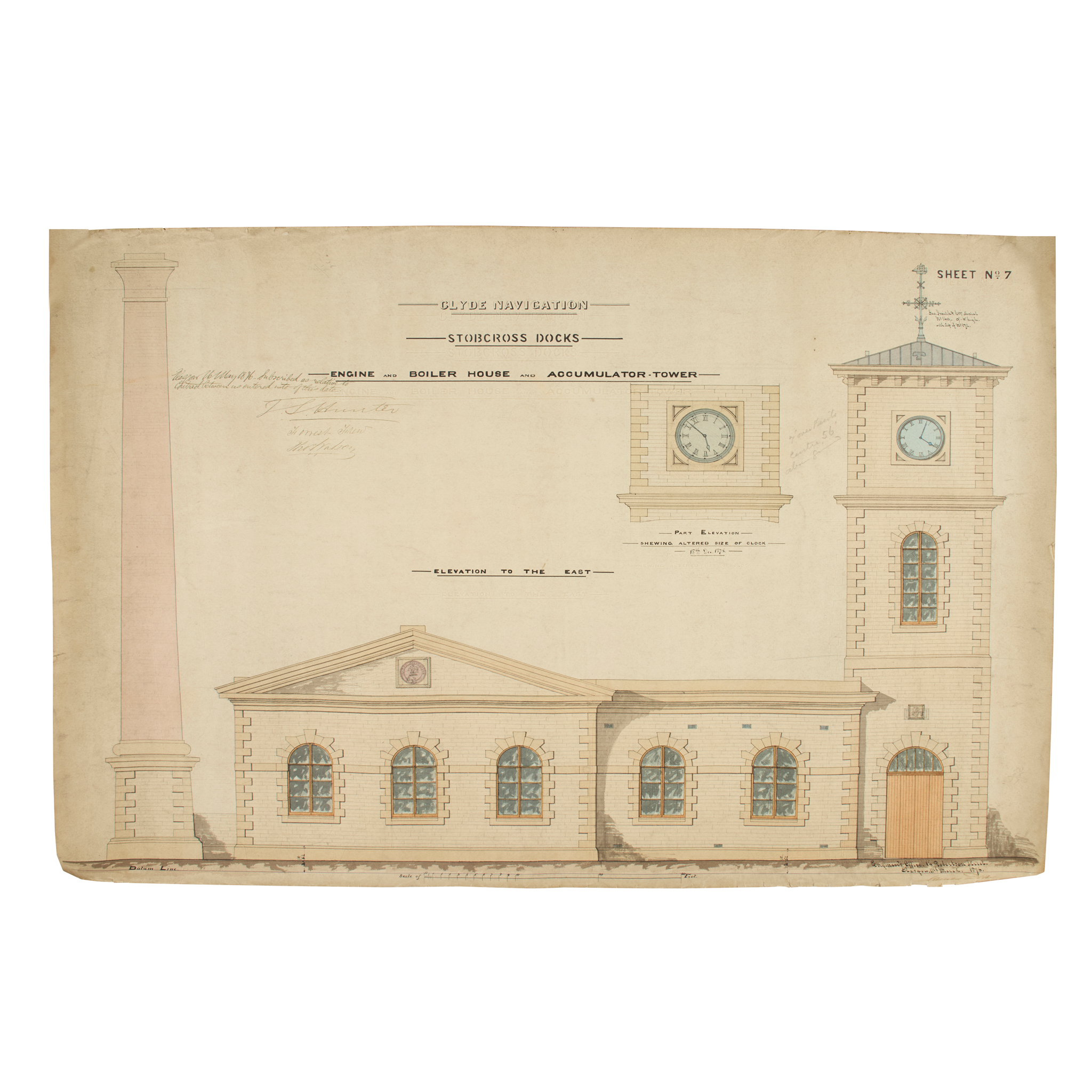Civil engineering
Collection of plans for the construction of Stobcross (Queen's) Dock, Glasgow, 1870s
Estimate: £300 - £500
Auction: 18 June 2025 from 10:00 BST
Description
All showing designs for the engine room, boiler house and accumulator tower, numbered 2-13, each approx. 55 x 76 cm (except no. 12, smaller), and all backed on linen (except nos. 11-13, no. 11 frayed, no. 13 with crude tape-repair to verso), all with the signature of James Deas as engineer-in-chief to the Clyde Navigation Trust lower right, the plans all somewhat dust-soiled overall
Footnote
James Deas (1827-1899) was a major figure in Glasgow's 19th-century industrial heyday, his obituary in the Proceedings of the Institution of Mechanical Engineers (1900) describing in detail the importance of his work on the Clyde Navigation: 'In 1869 [Deas] became engineer-in-chief of the Clyde Trust. The magnitude of the work carried out under his direction during the past thirty years can he seen from the following figures. The quayage has been increased from 3.18 to 18.5 miles, and the water area from 76 to 209 acres. There were then three shipbuilding yards, and Napier's dock, occupying water frontage where quays now exist … The river, as well as the harbour, has been deepened by 5 feet for the 18 miles under the jurisdiction of the Trustees … When he became engineer there were only two cross-river ferries, now there are about fifteen; and in addition he had a large part in organising the service of penny steamers up and down the harbour. An extensive system of railway sidings has been laid throughout the harbour. When he became engineer there were no cranes for shippers' use … now they are dotted all over the harbour … During the same period the revenue of the Trust has increased from £150,000 to £428,000, and the vessels frequenting the harbour exceed four million tons annually … He was joint inventor with Mr. Nairn, also of the Clyde Trust, of a digger which was largely used in connection with excavating the interior of the triple cylinder of concrete introduced by him for quay walls. Another invention of his was a railway switch-box.

